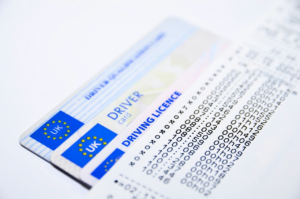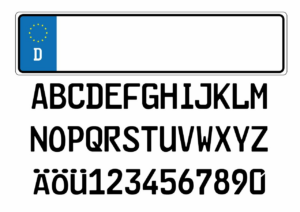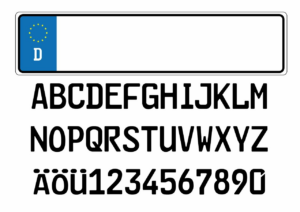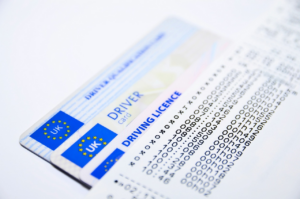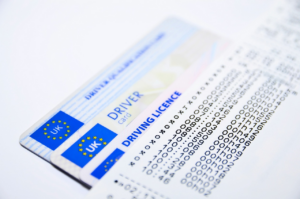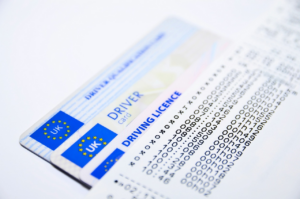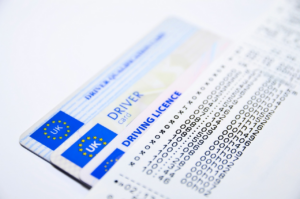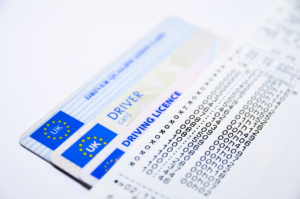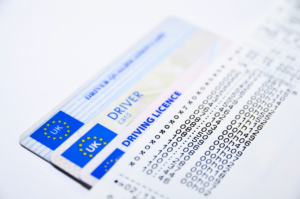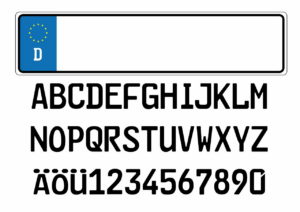So, you’ve failed your Australia driving licence practical test. Don’t worry, it’s not the end of the world. You can still get your licence by taking the necessary steps to improve your driving skills and knowledge.
In this article, we will guide you through the process of what to do if you fail the Australia driving licence practical test.
First off, it’s important to reflect on your performance during the test. Did you make any critical mistakes that led to your failure? Were there any areas where you felt particularly weak or unsure?
Taking the time to analyze your performance can help you identify areas for improvement and make a plan for how to address them. From there, you can review the driving manual and practice, practice, practice to build up your skills and confidence behind the wheel.
With determination and effort, you can overcome your disappointment and pass the test on your next attempt.
Reflect on Your Performance
Reflecting on how you did will help you improve for next time. It’s important to take some time after your test to think about how you performed. Try to be objective and honest with yourself about what you did well and what you could improve on.
Did you make any critical errors or minor mistakes? Were you nervous or distracted during the test? Reflecting on your performance can help you identify areas to focus on for your next attempt.
One way to reflect on your performance is to ask your driving instructor for feedback. They can provide insight into what you did well and what you need to work on.
You can also ask a friend or family member who has passed the driving test for advice. It’s important to take their feedback constructively and not become defensive or dismissive. Use their feedback to identify areas to improve and work on them before your next attempt.
Remember, failing the driving test is not the end of the world, it’s an opportunity to learn and improve.
Review the Driving Manual
Take a look at the driving manual to brush up on your skills and improve your chances of passing the test next time around. The manual contains important information on road rules, safe driving practices, and the specific requirements of the practical driving test.
By reviewing this information, you can identify areas where you need to improve and work on them before your next attempt. The driving manual also contains detailed instructions on how to perform various driving maneuvers, such as parallel parking, three-point turns, and reversing around a corner.
By practicing these maneuvers in a safe and controlled environment, you can build your confidence and increase your chances of passing the test. Remember to pay attention to the details and follow the instructions closely, as even small mistakes can result in a failed test.
Practice, Practice, Practice
To improve your chances of passing the practical driving test, it’s important to practice, practice, practice.
One helpful tip is to get familiar with the test route by driving it multiple times before the actual test.
Additionally, make sure to practice different driving scenarios such as parallel parking, three-point turns, and reversing around corners.
By doing so, you’ll feel more confident and prepared on test day.
Get Familiar with the Test Route
Get familiar with the test route to increase your chances of success. Before your test, make sure you know the route by heart. This will give you more confidence and help you anticipate any tricky sections or challenging areas. You can either ask your driving instructor or use online resources to find out the test route.
Once you have it, take some time to drive around it and practice as much as you can. This way, you will be able to simulate the test conditions and get a feel for what to expect. When exploring the test route, pay attention to any road signs, speed limits, intersections, and roundabouts. Make sure you know how to navigate them properly and safely. Take note of any hazards, such as sharp turns, narrow lanes, or steep hills, and practice how to handle them.
Knowing the test route will also help you plan your route in advance and avoid any unnecessary detours or mistakes. Remember, the more familiar you are with the test route, the more likely you are to pass your driving test.
Practice Different Driving Scenarios
You’ll feel confident and prepared for any situation on the road when you practice various driving scenarios. The practical test is designed to assess your ability to drive safely in different situations, so it’s essential to practice different scenarios to improve your skills.
Here are three driving scenarios you should practice before retaking the test:
-
Driving in heavy traffic: Practice driving in busy streets during rush hour, changing lanes, merging, and keeping a safe distance from other vehicles.
-
Reversing and parking: Practice reversing in different situations, such as parallel parking, parking on a hill, and parking in a tight spot.
-
Driving in adverse weather conditions: Practice driving in the rain, fog, and at night to improve your visibility and get used to driving in adverse weather conditions.
Remember, the more scenarios you practice, the more confident you’ll feel on the road. Take your time, practice regularly, and don’t rush retaking the test. With enough preparation, you’ll pass the practical test and earn your driver’s license.
Take Refresher Driving Lessons
Brush up on your driving skills with some refresher lessons to increase your chances of passing the test next time around. Refresher driving lessons are designed to help you regain confidence and sharpen your driving skills.
A qualified instructor can provide you with valuable feedback and guidance on areas you need to improve on. During the refresher lessons, you will have the opportunity to practice different driving scenarios and receive personalized instruction on how to handle them.
This will help you feel more comfortable and confident on the road, which is essential for passing the driving test. So, if you’ve failed the driving test, don’t give up. Instead, invest in some refresher driving lessons to increase your chances of success on the next attempt.
Manage Test Anxiety
Managing test anxiety is crucial for achieving success on the driving test, so it’s important to develop effective coping strategies.
Before the test, try to practice relaxation techniques such as deep breathing or meditation to help calm your nerves.
During the test, stay focused on the task at hand and avoid getting distracted by negative thoughts or feelings of self-doubt.
Remember that mistakes are a natural part of the learning process, and that one failed attempt does not define your abilities as a driver.
Another effective way to manage test anxiety is to engage in positive self-talk. Instead of dwelling on potential mistakes or negative outcomes, focus on positive affirmations such as "I’m a capable and confident driver" or "I’m prepared and ready to ace this test".
Additionally, make sure to get plenty of rest the night before the test, eat a healthy meal, and arrive at the testing center early to avoid feeling rushed or anxious.
By taking a proactive approach to managing test anxiety, you can increase your chances of success on the driving test and ultimately obtain your Australian driver’s license.
Arrive Early and Be Prepared
When arriving early to take your practical driving test, it’s important to make sure your vehicle is in good condition. Check that the brakes, lights, and tires are all functioning properly to avoid any potential issues during the test.
Additionally, be sure to bring all necessary documents such as your learner’s permit and registration papers to avoid any delays or complications. Being prepared in these ways can help you feel more confident and focused during your driving test.
Check Your Vehicle’s Condition
Make sure your vehicle is in good shape before taking the test. It could make all the difference in your success. Here are some things you should check before heading to the test center:
-
Check your tires: Make sure they have enough air and good tread depth.
-
Check your lights: Check that all your lights are working, including headlights, brake lights, and turn signals.
-
Check your mirrors: Make sure they’re clean and positioned correctly.
-
Check your brakes: Test your brakes to make sure they’re working properly.
By taking the time to check your vehicle’s condition, you’ll not only ensure that you’re safe on the road, but you’ll also increase your chances of passing the driving test. Don’t let a simple issue with your vehicle prevent you from obtaining your driver’s license.
Bring All Necessary Documents
Now that you’ve checked your vehicle’s condition, it’s time to focus on the necessary documents you need to bring for the practical driving test.
Make sure to bring your learner’s permit, logbook, and any other required documents. Failure to bring any of these documents may result in an automatic fail.
It’s important to double-check the documents you need to bring as requirements may vary depending on the state or territory.
You may also want to bring a copy of the road rules handbook and any notes you’ve taken during your driving lessons.
Being organized and prepared will not only help you avoid unnecessary stress but also increase your chances of passing the practical driving test.
Listen to the Examiner’s Feedback
When you’re taking the practical driving test in Australia, it’s important to listen carefully to the examiner’s feedback. This will help you understand areas where you need to improve your driving skills.
If you’re unsure about something the examiner says, don’t hesitate to ask questions for clarification. By doing so, you’ll be better equipped to pass the test on your next attempt.
Understand Areas for Improvement
To improve your chances of success, take a close look at the areas where you can enhance your driving skills. After receiving feedback from the examiner, take some time to reflect on their comments and try to understand the specific areas where you need to improve.
This could include issues such as improper lane changing, not checking blind spots, or not following traffic signals. Understanding your weaknesses will allow you to focus your efforts on improving these specific areas, rather than trying to fix everything at once.
Once you’ve identified the areas where you need to improve, create a plan to address these issues. This could include scheduling additional driving lessons with an instructor, practicing specific maneuvers on your own, or reviewing the driving handbook to refresh your knowledge.
It’s important to approach this process with a positive attitude and a willingness to learn and grow as a driver. With dedication and hard work, you can overcome your weaknesses and pass the driving test on your next attempt.
Ask Questions for Clarification
Make sure to clarify any doubts or uncertainties by asking questions during the feedback session. This will help you understand where you need to improve and boost your confidence for the next attempt. Don’t be afraid to ask for clarification on any comments or criticisms the examiner has given you. It’s important to understand what went wrong and what steps you need to take to improve your driving skills.
Here are some questions you can ask during the feedback session:
-
Can you explain how I could’ve approached that roundabout better?
-
How can I improve my lane positioning when driving?
-
Can you give me specific examples of where I went wrong during the test?
-
What advice do you have for me to improve my driving skills for the next attempt?
By asking these questions, you can gain valuable insights into your driving abilities and areas that need improvement. This will not only help you pass the test in your next attempt but also make you a safer and more confident driver on the road.
Repeat the Test
Don’t give up, keep practicing and try again to ace that test! Failing the practical driving test can be disappointing, but it doesn’t mean that you can’t pass it. It’s important to remember that driving is a skill that takes time and practice to master.
The more you practice, the better you will become, and the more likely you are to pass the test.
When you’re ready to take the test again, make sure you review the areas where you struggled before. Take note of the feedback you received after the test and work on improving those specific skills.
You may also want to consider taking additional driving lessons to get more practice and guidance. With determination and hard work, you can improve your driving skills and pass the test on your next attempt.
Frequently Asked Questions
How long do you have to wait before you can retake the driving test if you fail?
If you fail the Australian driving licence practical test, you must wait a certain amount of time before you can retake it. The length of this waiting period varies depending on the state or territory in which you live, but it’s typically around two weeks.
During this time, you should take the opportunity to review your driving skills and identify any areas that need improvement. You may also want to consider taking additional driving lessons or practice sessions to help you prepare for your next attempt.
Remember, passing the driving test requires both knowledge and skill, so be sure to focus on both as you work towards earning your licence.
Can you take the driving test in a different state or territory if you failed in one state?
If you failed the driving test in one state or territory of Australia, you can take the test again in any other state or territory. However, it’s important to note that each state or territory may have different driving laws and regulations.
So, it’s recommended that you study the specific laws and regulations of the state or territory where you plan to retake the test. Additionally, you’ll need to make sure that you meet all the requirements for taking the test in that state or territory, such as providing the necessary identification and paying any fees.
Ultimately, the key to passing the driving test is to practice and prepare thoroughly, no matter where you take it.
Can you use your own car for the driving test?
You’re allowed to use your own car for the driving test, provided that it meets the necessary requirements.
Your car must be registered, insured, and roadworthy. It should have no obvious defects, and all lights, indicators, brakes, and tires must be in good working condition.
Additionally, the car must display L-plates and have an adjustable passenger seat for the examiner.
Using your own car for the driving test can help you feel more comfortable and confident, as you’re already familiar with the vehicle. However, it’s important to note that you’re responsible for any damages or accidents that may occur during the test.
What happens if you make a minor mistake during the driving test?
If you make a minor mistake during the driving test in Australia, it’s not necessarily an automatic fail. The examiner will be looking for overall safe and competent driving, so a single mistake may not be a big deal.
However, if you repeatedly make the same mistake or make a mistake that puts yourself or others in danger, you may fail the test. It’s important to remain calm and focused during the test, and to listen to the examiner’s feedback.
If you do fail, take it as a learning opportunity and schedule a retest when you feel more confident and prepared.
Is it possible to appeal the results of the driving test if you feel like you were unfairly judged?
If you feel that you were unfairly judged during your driving test, you may be wondering if it’s possible to appeal the results.
While it can be frustrating to receive a negative outcome, it’s important to remember that the testing process is designed to ensure that drivers are safe and competent on the road. However, if you believe that there was a mistake made or that the test was not conducted fairly, you may be able to appeal the results.
It’s important to note that each state and territory has their own appeals process, so make sure to research the specific guidelines for your area. Keep in mind that the appeals process can be lengthy and may require additional testing or documentation, so be prepared to invest the time and effort if you decide to pursue an appeal.
Conclusion
In conclusion, failing the Australian driving licence practical test can be a frustrating experience, but it doesn’t have to be the end of the road. It’s important to take the time to reflect on your performance and identify areas for improvement.
Reviewing the driving manual and practicing regularly can help you build confidence and improve your skills. If you’re struggling to pass the test, consider taking refresher driving lessons to get professional guidance and feedback. Managing test anxiety is also crucial, so be sure to arrive early, be prepared, and listen carefully to the examiner’s feedback.
And remember, if you don’t pass the first time, don’t give up. You can always repeat the test and work towards achieving your goal of obtaining a driver’s licence. With dedication and perseverance, you can overcome this hurdle and become a safe and responsible driver on Australian roads.


